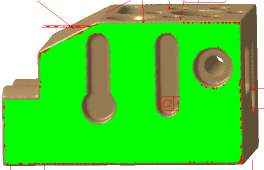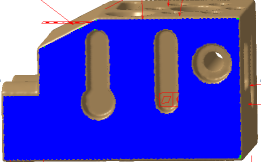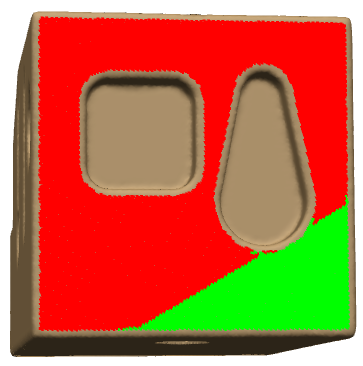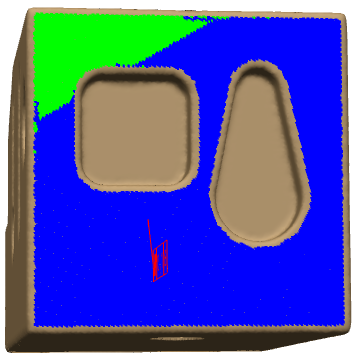Checking Geometric Tolerances | |
| |
-
Select a segmented mesh.
- The mesh on which you verify the GD&T elements must be properly aligned with the corresponding exact CAD data (for example by best fit).
- Geometric Tolerances Checker analyses a segmented mesh, each cell corresponding to a geometry potentially pointed by a GD&T.
- You can select a segmented mesh, or let Geometric Tolerances Checker do the segmentation.
- Pick a GD&T or the CAD surfaces related to the GD&T
- Optional: Select the Radius check box.
The points found inside a circular pipe with this radius and centered on the CAD boundaries are ignored for the computation.
-
Click Apply.
Each found tolerance is evaluated and the measured value is displayed with an OK or KO status.
- Select a row in the dialog box.The defect is highlighted in the work area, with a color map:
- The areas in green meet the tolerance.
- The areas in red are above the tolerance.
- The areas in blue are below the tolerance.
- Some tolerances are evaluated from a reference named
datum. Depending on the type of the tolerance, this reference may
slightly move around its default position. This is the "clearance"
of the reference.
Use the slider in the dialog box to move the reference from one
extremity to the otherThe distribution of colors changes in the defect map.
- First example:
- First extremity of the reference

- Intermediate position of the reference

- Second extremity of the reference


confirming that, at a certain distance from its edges, the face is flat, the parallelism criterion is reached. - First extremity of the reference
- Second example:
- First extremity of the reference

- Intermediate position of the reference

- Second extremity of the reference

Whatever the position of the reference, it is impossible to reach the parallelism criterion of this geometric tolerance. This is a true defect to be solved on the physical part.
- First extremity of the reference
- First example: